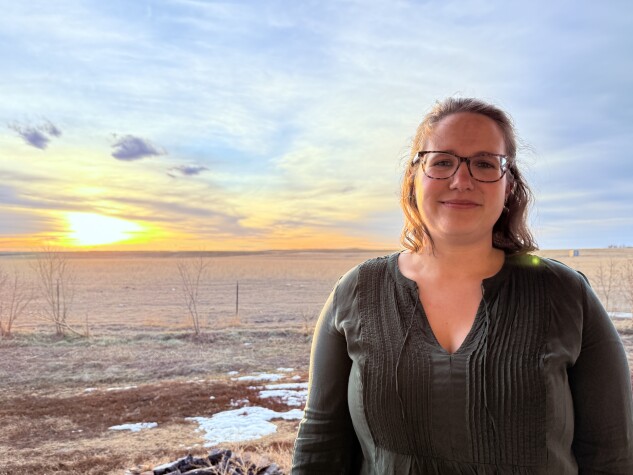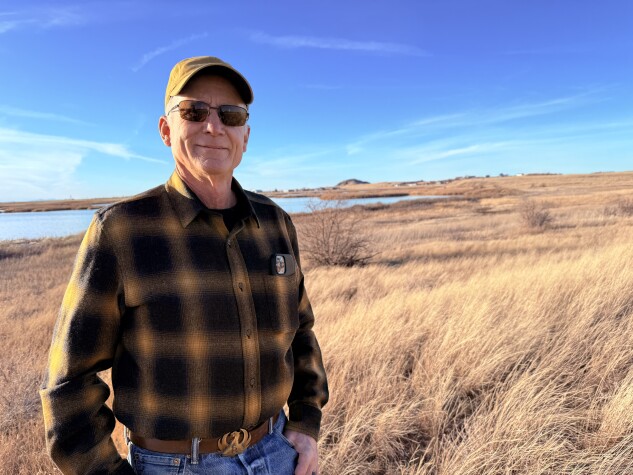- Federal firings expected to undermine oil and gas permitting
- Forest staff buckle under pressure to approve more logging
Loreena Genther worked nine seasons as an archaeologist for the US Bureau of Land Management high on the treeless plains of north-central Montana, waiting to be brought on permanently.
She got her big break last May when the BLM hired her as a full-time range technician, making sure ranchers were following grazing regulations and billing for grazing fees. The BLM promised she’d help out with archaeological work connected to nearby oil and gas development on federal lands around the small city of Havre, Mont.
“Part of their justifying my position was that I could do archaeological surveys, which to do any kind of pipeline right of way road access for oil and gas, you need archaeological clearance,” she said.
But on Feb. 18, three months before her probationary period was to end, Genther became one of thousands of employees fired in the Trump administration’s plan to slash the federal workforce.
The Department of Government Efficiency-led layoffs of thousands of federal workers have targeted immigration judges at a time President Donald Trump is trying to speed up deportations of undocumented immigrants. Bird flu researchers were fired as the administration struggled to contain a new outbreak. Firefighters were let go with wildfire season approaching.
And in Havre and across eastern Montana, Genther and others who got fired were among the people poised to carry out Trump’s executive order to speed up permits so energy companies can “drill, baby, drill.”
“You’re going to have a federal government that has certain priorities that can’t push the ‘go’ button on certain priorities because you have dismantled the apparatus that allows you to do that,” said Montana state Rep. Paul Tuss (D), who represents Havre.
Federal employees are part of daily life in Havre, the seat of Hill County, where 57% of voters supported Trump in the 2024 election.
Many current and former employees say they’re accustomed to adapting to the changing agendas of each new administration. They said they’ve worked for both Democrats and Republicans.
When the Office of Personnel Management initially asked all BLM state offices to compile lists of probationary employees, the prevailing belief was that the BLM would be untouched in any potential firings, Genther said.
“When it actually happened, we were all blindsided,” she said.
BLM spokesman Brian Hires said the bureau can’t comment, including on how many or what percentage of the Havre office’s employees were fired, because BLM doesn’t comment on personnel matters and “these issues are currently under litigation.” The Interior Department, of which BLM is part, in an emailed statement said it has an “unwavering” commitment to public lands and is working with OPM to prioritize fiscal responsibility.
It Takes a Team
In this remote and wind-battered region of northern Montana up against the Canadian border, cows, antelope, and BNSF rail cars far outnumber people.
Oil and gas is also a major part of eastern Montana’s economy, and much of the development is on BLM land east of Havre. The bureau manages about 8 million acres in Montana and has offices scattered all over the state and western North Dakota, where the Bakken shale oil fields are the third-most productive oil field in the US.
Federal employees in Havre process oil drilling applications. They also issue grazing permits, and run the Bureau of Reclamation’s Fresno Dam on the Milk River. They help ranchers combat wind and water erosion through a Natural Resources Conservation Service program.
Most federal workers there have a Red Card—a certification that allows them to help fight wildfires that could sweep across the plains.
“It takes an entire interdisciplinary team” to conduct oil and gas lease sales and issue permits, said Mary Jo Rugwell, who served as the BLM’s Wyoming state director in the first Trump administration. The BLM has had a high job vacancy rate for years, “and further reducing that workforce is going to have a detrimental effect on this administration’s unleashing American energy policy.”
When a company applies for a drilling permit on BLM land, a biologist and archaeologist from the bureau’s local office are required to visit the drilling site and ensure there are no conflicts with wildlife and historic artifacts, said Brian Hockett, a retired BLM environmental coordinator who worked in the Havre office several years ago.
Oil and gas was to be part of another probationary employee’s job at a BLM office in far eastern Montana, where they worked as a hydrologist who worked with nonprofit groups to help restore federal land degraded by years of overgrazing. Soon, the employee’s job was to transition to working on hydrological studies for oil and gas leases and ensuring oil companies comply with their lease stipulations.
But the employee was fired shortly before their oil and gas work began, and just days before renewing their firefighting Red Card. The employee asked not to be named, citing possible retaliation in the small town where they live and fear they’ll be overlooked for future employment in the federal government.
A decimated federal workforce will mean fewer people to maintain dams used for local water storage and flood control, fewer firefighters to control wildfires that shroud Havre in smoke each summer, and fewer people to process US Department of Agriculture rural development loans and grants that nearly every community in the region has received for drinking water and waste water systems, Tuss said.
“Who’s going to manage those assets?” said Tuss, who’s also the executive director of a five-county economic development organization.
The USDA said in an unsigned email that it “released” non-essential employees, remains committed to preserving safety-related jobs, and fully supports Trump’s efforts to avoid using tax dollars to support bureaucracy.
Caring for the Land
Western-state Republicans have long fought for grazing rights to federal land.
Grazing was one of the motivating factors behind the Sagebrush Rebellion, an anti-federal government movement among some Western ranchers that kicked off in the late 1970s after Congress passed a law that asserted more federal control over public lands in the West, standardized livestock grazing fees, and de-prioritized grazing in some areas.
Project 2025, a blueprint led by the Heritage Foundation for reshaping the federal government, cites support for grazing as one of the BLM’s primary functions. The document’s public lands section was written by William Perry Pendley, an acting chief of the BLM in the first Trump administration and a key figure in agitating for a new Sagebrush Rebellion.
Part of Scott Schmitt’s job, as a civil engineer who designed stock water pipelines for ranchland, was to make sure ranchers’ cattle had water where they needed it.
“It is a way for them to unlock new land that now can be grazed if it had been sitting dormant,” or it had been cropland, Schmitt said. “Our goal is to conserve the soil, so if it’s not cropland, we’re not losing topsoil.” But he too was laid off from the NRCS, part of the USDA, on Feb. 13. Schmitt said he and a co-worker had replaced two Havre-based NRCS engineers who’d retired, and now the office has less staff to support ranching, a key component of the region’s economy.
Tallie Steiner, an assistant wildlife biologist on Montana’s Flathead National Forest who was among dozens of forest employees fired in February, held a Red Card.
The national forest, which like the NRCS is managed under the USDA, spreads across the Continental Divide along the spine of the Northern Rocky Mountains—a wildfire-prone region that sometimes shrouds eastern Montana in smoke during wildfire season.
Steiner’s main job was to survey lynx, loons, and wolverines in the forest, but during wildfire season, she was able to help firefighters on the fireline with logistics and other support work.
“The Forest Service’s motto is, ‘Caring for the Land and Serving People,’” Steiner said. “It just really gave me a sense of fulfillment to do exactly that.”
But that kind of support is becoming scarce in western national forests as employees get fired and the Trump administration pressures remaining staff to prioritize more logging, said a still-employed US Forest Service staffer based in Montana who spoke on condition of anonymity to protect their job.
Trump on March 1 signed an executive order directing the Forest Service and BLM to expand logging on federal lands in part by using emergency provisions of the Endangered Species Act to speed approvals of timber sales and prevent imperiled plants and animals from standing in the way of loggers.
There’s less time to focus on wildfire preparation with the pressure to conduct more timber sales with a smaller budget and fewer workers, the employee said.
The Forest Service is also de-emphasizing work monitoring pollinators and endangered species, the employee said.
A Feb. 28 federal court ruling declaring the firing of probationary employees illegal has given the Havre employees hope. Genther said she loved working outdoors and in the elements every day, and she’d take her job back if the BLM offered it.
“Working for the BLM meant the opportunity to utilize my degree for a greater purpose and also gave me the opportunity to work on public lands,” she said. “The career that I have worked toward my entire adult life has been taken from me.”
To contact the reporter on this story:
To contact the editors responsible for this story:
Learn more about Bloomberg Law or Log In to keep reading:
See Breaking News in Context
Bloomberg Law provides trusted coverage of current events enhanced with legal analysis.
Already a subscriber?
Log in to keep reading or access research tools and resources.





